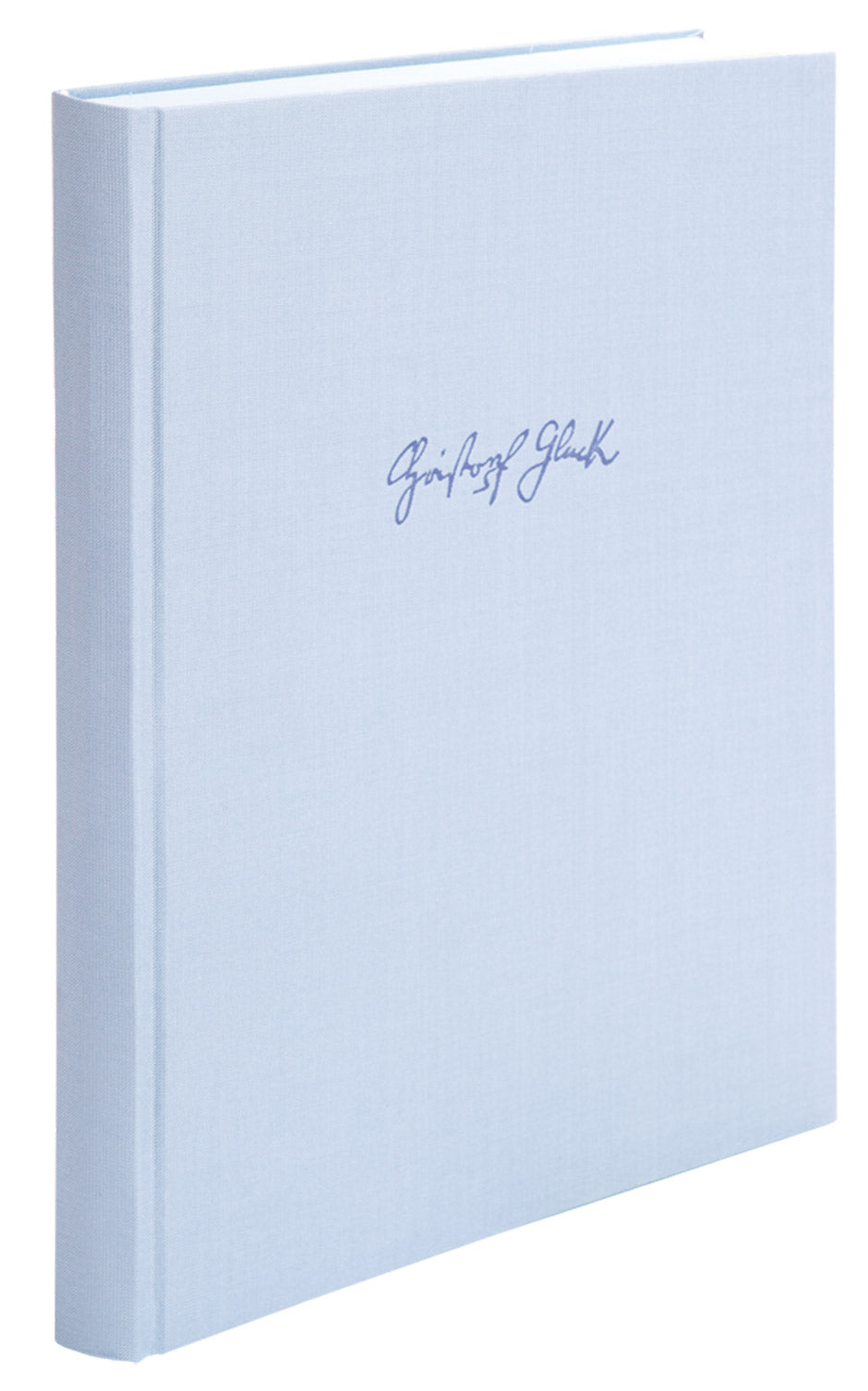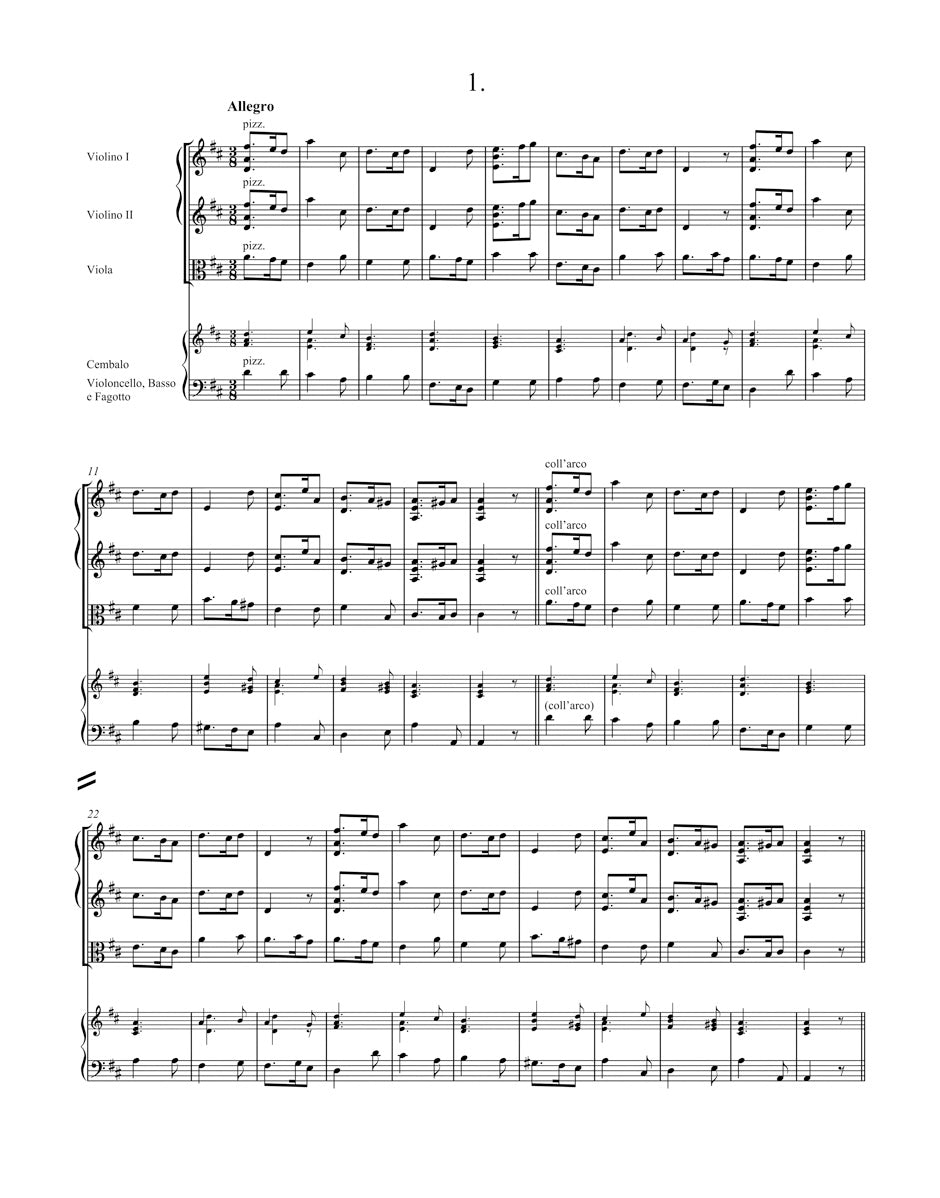Gluck: Ballet Music
Complete Edition - Series II - Volume 3
Expected to ship in about a week.
- Composer: Christoph Willibald Gluck (1714-1787)
- Editor: Irene Brandenburg
- Format: Full Score – Hardcover
- Instrumentation: Orchestra
- Binding: Hardcover
- ISMN:
- Size: 10.2 x 13.0 inches
- Pages: 256
- Urtext / Critical Edition
Description
To conclude Series II (Dance Dramas) from the Gluck Complete Edition (GGA), this volume of Christoph Willibald Gluck's earliest contributions to the genre comprises six ballet scores from 1759 ("La Promenade", "Les Jardiniers", "Les Turcs", "Les Savoiards", "Les Amours de Flore et Zéphire", and "Le Suisse") as well as the ballet music for "Les Vendanges", which dates from 1761. These works belong to the compositions – also called "Krumau ballets" because of their musical transmission – which Gluck created in Vienna between 1759 and 1765 for the court theatres in Laxenburg and Schönbrunn as well as the Kärntnertortheater, and which are to be attributed to him as a ballet composer around the middle of the 18th century in Viennese theatre life based on the considerations presented in the general preface.
Together with volumes II/3 to II/5, ballet music by Gluck is available whose sources come from the former Schwarzenberg court archive in Ceský Krumlov, Czech Republic, and which until the Velvet Revolution of 1989, lay behind the Iron Curtain remaining largely inaccessible and unexplored by Western scholars. These volumes reflect two fundamental developments in Gluck research: on the one hand, they provide a significantly expanded, historically more accurate idea of what it meant to compose for the ballet in the 18th century; on the other hand, they bring to light an immense treasure trove of sources formerly of Viennese provenance.
In addition to the detailed introduction by this volume's editor on the ballet choreographies of Gasparo Angiolini and Carlo Bernardi, on the formation of the ballet troupes of the Viennese theatres in Gluck's early years there, on ballet types and genres, as well as a detailed account of the individual titles, the volume includes a general preface to volumes II/3 through II/5 by Bruce Alan Brown, which discusses Gluck's ballet music in Vienna in general as well as the development of research into this genre. Extensive illustrations (partly from the so-called "Durazzo Collection") with reference to the choreographies enrich the discussions. The ballet works, which have survived in only one source each, appear in print for the first time in this volume of the Gluck Complete Edition.
Publishers use a lot of words to describe what they sell, and we know it can be confusing. We've tried to be as clear as possible to make sure you get exactly what you are looking for. Below are descriptions of the terms that we use to describe the various formats that music often comes in.
Choral Score
A score for vocalists that only contains the vocal lines. The instrumental parts are not there for reference. Generally, cheaper than a vocal score and requires multiple copies for purchase.
Facsimile
Reproductions of the original hand-written scores from the composer.
Full Score
For ensemble music, this indicates that the edition contains all parts on a single system (there are not separate parts for each player). In larger ensembles, this is for the conductor.
Hardcover
Hardbound. Generally either linen-covered or half-leather.
Orchestral Parts
Similar to a wind set, this is a collection of parts. In the case of strings, the numbers listed are the number of copies included, though generally these are available individually (often with minimum quantities required).
Paperback
When publishers offer multiple bindings (e.g. hardcover) or study scores, this is the "standard" version. If you're planning to play the music, this is probably what you want.
Performance / Playing Score
A score of the music containing all parts on one system, intended for players to share. There are not separate parts for each player.
Set of Parts
For ensemble music, this indicates that there are separate individual parts for each player.
Solo Part with Piano Reduction
For solo pieces with orchestra, this is a version that contains a piano reduction of the orchestra parts. For piano pieces, two copies are typically needed for performance.
Study Score
A small (think choral size) copy of the complete score meant for studying, and not playing. They make great add-ons when learning concertos and small chamber works.
Vocal Score
A score prepared for vocalists that includes the piano/organ part or a reduction of the instrumental parts.
Wind Set
For orchestral music, this is a collection of wind and percussion parts. The specific quantities of each instrument are notated.
With Audio
In addition to the printed music, the edition contains recordings of the pieces. This may be an included CD, or access to files on the internet.
With / Without Fingering (Markings)
Some publishers prepare two copies - a pure Urtext edition that includes no fingering (or bowing) suggestions and a lightly edited version that includes a minimal number of editorial markings.





